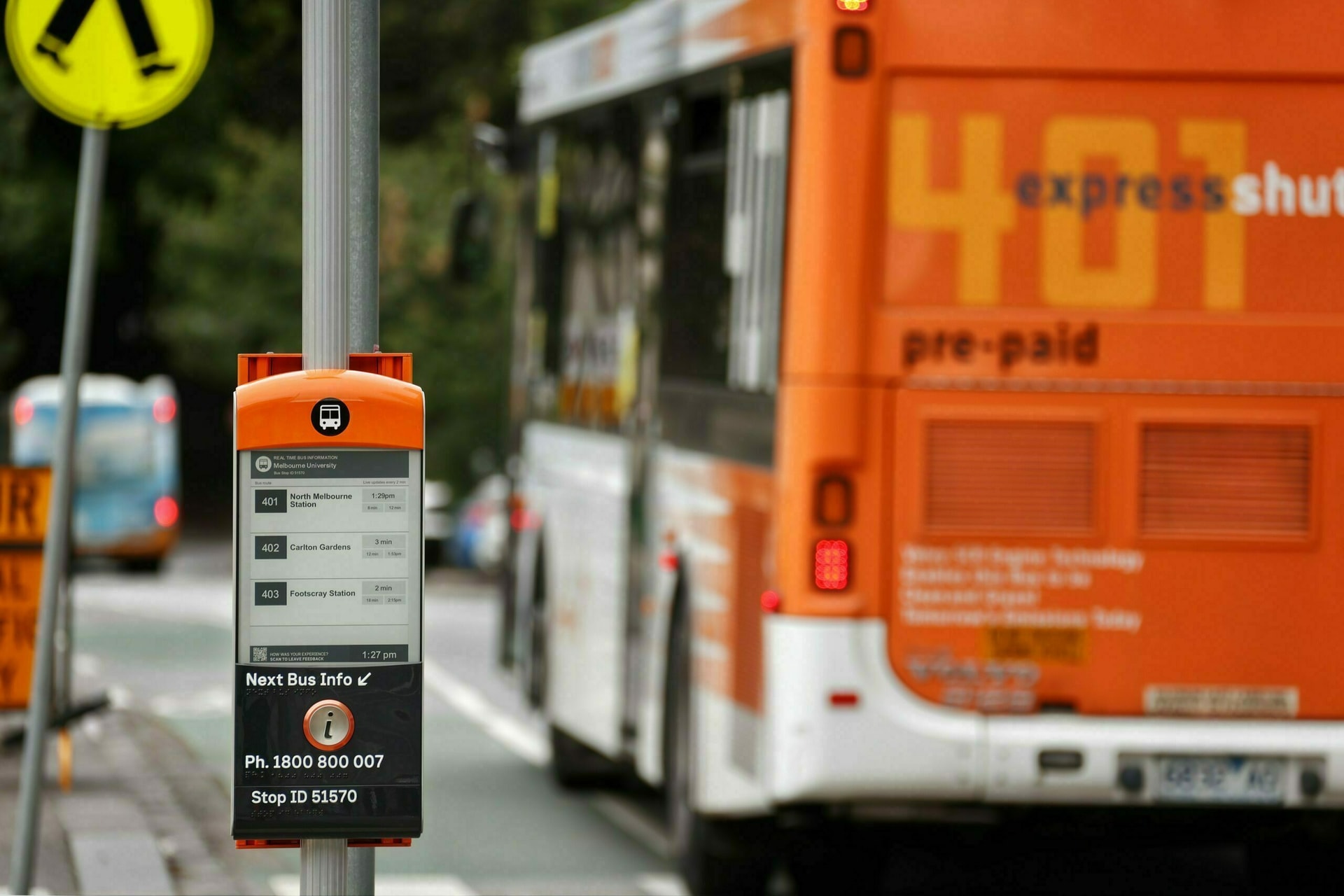Better bus network is best solution to Melbourne’s growing transport needs

A faster, fairer and better-connected bus network is needed for Melbourne, especially in under-serviced outer growth areas, according to new research from the state’s independent infrastructure adviser.
Infrastructure Victoria Acting Chief Executive Officer Dr Allison Stewart said: “More than a third (34%) of Melburnians have never caught the bus, even though 8 out of 10 (82%) of us live within 400 metres of a bus stop.
“Unless they live in areas near train and tram corridors, most Melburnians must rely on a slow and patchy bus network. Average wait times for buses are about 40 minutes during a typical weekday and 50 minutes on Sundays,” said Dr Stewart.
“Faster and more frequent bus services, longer operating hours, and routes which better connect to train stations and activity centres can give more people access to good public transport, reduce traffic congestion, and cut Victoria’s transport emissions.
“Melbourne’s growth suburbs in particular need good public transport now and buses are the best way to deliver it.”
Infrastructure Victoria’s latest report, Fast, frequent, fair: how buses can better connect Melbourne, makes 10 recommendations to the Victorian Government prioritising actions and investment for reforming the city’s bus network.
It recommends an immediate increase in the frequency of bus services, beginning with outer and growth area suburbs, as well as wide-ranging reforms to get more from the existing network.
“Buses can take a lead role in Melbourne’s transport network,” Dr Stewart said. “We can straighten out bus routes, make sure buses don’t get stuck in traffic, operate them for longer hours and better connect them to other public transport services.”
The report also recommends the government plan and start delivering a network of bus rapid transit corridors across Melbourne over 5 years.
“Sydney, Brisbane and Adelaide have already embraced bus rapid transit and similar fast bus services,” said Dr Stewart.
“A rapid transport network of separated bus lanes across Melbourne could deliver more than 80,000 extra boardings every day. That’s more than the total number of passengers that take a train from Flinders Street station every day.”
Changes to the city’s bus network are needed as Melbourne’s population grows.
Dr Stewart said: “Everyone on the road is slowing down. Melburnians face almost a 50% increase in road congestion by 2036 if we don’t make changes to how we get around, including giving people more options to choose public transport where they can.
“Melburnians told us that they would be more likely to use a bus if bus fares were cheaper. Our community research shows every $1 reduction in bus fares leads to up to 20% more boardings,” said Dr Stewart.
“While Melbourne is likely to remain a car dependent city, a fast, frequent and better-connected bus network is better than being stuck in traffic. New bus lanes can make journeys faster, more than doubling bus patronage along key corridors.”
The government currently spends over $800 million operating the metropolitan bus network but buses carry fewer passengers than any other form of public transport. This is despite buses offering over 5 times more scheduled service kilometers than the city’s tram or train networks.
“If we reform and invest in our bus network, we will have much better public transport, and a network that delivers much better value to Victoria,” Dr Stewart said.
“People will have more choices for travel which could save them money, and buses will be a better choice for many more Melburnians.”
Infrastructure Victoria’s research focused on bus services in Melbourne. It did not encompass bus services in Victoria’s regions, which each face unique challenges and opportunities. However, our findings may be relevant for regional cities.
Additionally, we recommended public transport in regional Victoria be redesigned to better meet local needs in Victoria’s infrastructure strategy 2021–2051 (see recommendation 83).
Infrastructure Victoria makes 10 recommendations to the Victorian Government to deliver a faster, fairer and better-connected bus network across greater Melbourne.
- Increase the frequency of bus services, beginning with outer and growth area suburbs.
- Optimise the bus network through fast and direct routes.
- Extend operating hours to match passenger demand and improve timetable integration.
- Strengthen the role of community transport across the network.
- Speed up buses through on-road priority and smarter technology.
- Plan and deliver bus rapid transit across Melbourne.
- Improve the bus stop and interchange experience.
- Substantially reduce bus fares relative to other modes.
- Update the Principal Public Transport Network to align it with existing and future mass transit bus routes to be delivered through Victoria’s bus plan.
- Provide funding certainty for growth area buses.